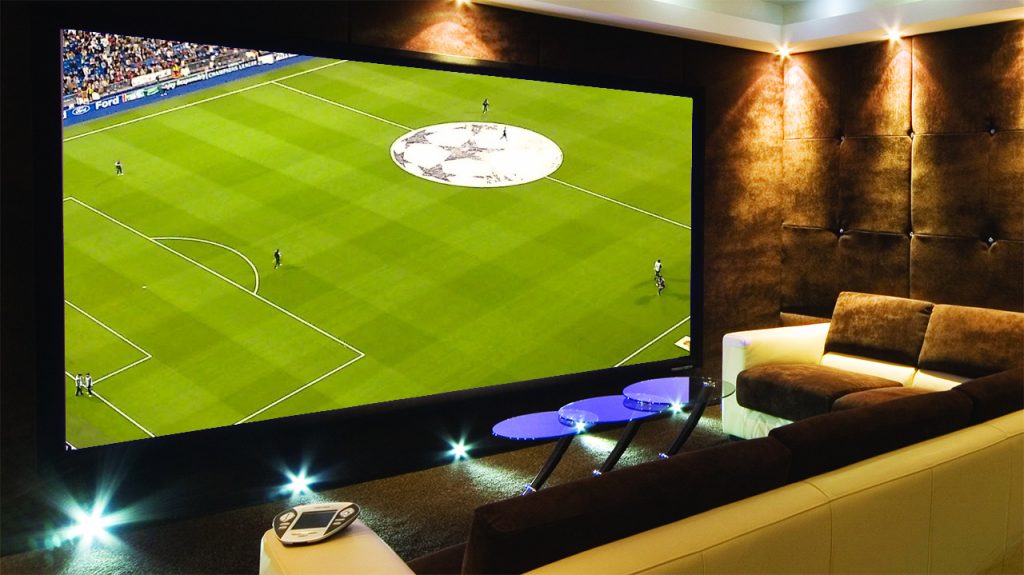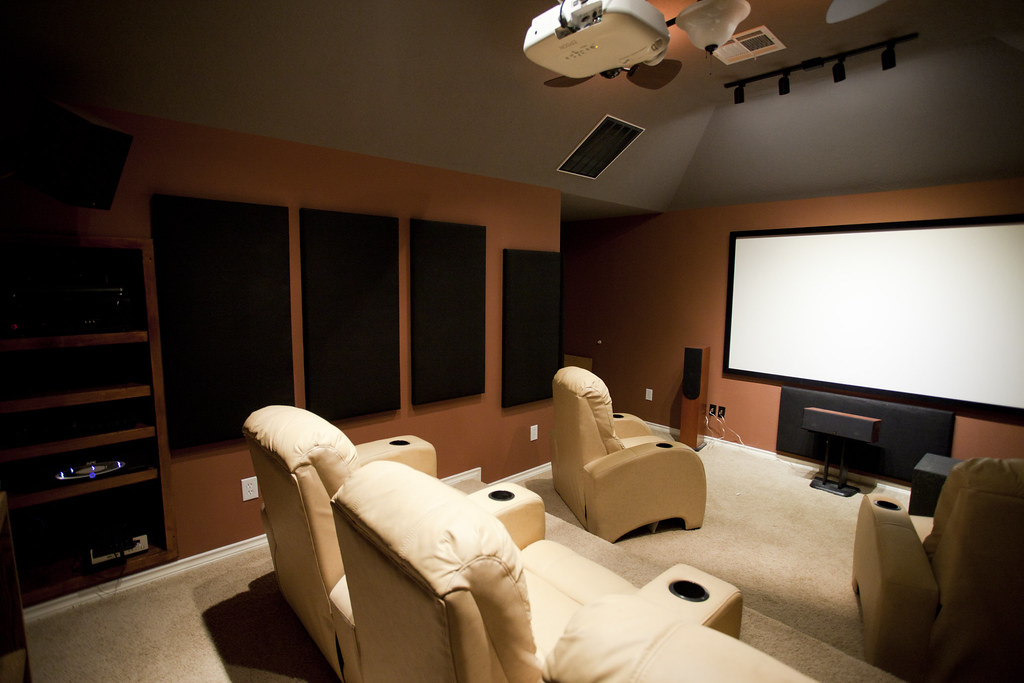Summary
– Step 1: Install the home theater speakers
– Step 2: Install and Connect the Audio/Video Amplifier
– Step 3: Connect your home theater speakers
The sound of a film is at least as important as the image for the immersive and spectacular side of the story. That’s why home audio systems are increasingly occupying the living rooms of our homes. Here’s how to install and connect a home cinema.
1. Install home theater speakers
When it comes to home theater installations, the speaker placement is critical to ensure that the sound is enveloping and immersive and not “messy”. The speakers are placed according to the reference listening position that represents the central point of the listening area (the sofa, for example).
Tip: Always leave a minimum of 10 cm between a speaker and a wall or cabinet and, if possible, place the speakers at ear level.
Arrange your speakers as follows:

– The center speaker should face the audience, close to the TV, and between the two front speakers. Newer television cabinets have a recess for this purpose under the television. Do not place the center speaker too deeply so as not to create an unpleasant echo.
– The front speakers are also placed in front of the viewer on either side of the TV, equidistant from the TV. Depending on the space in the room, the front speakers should face the viewer at an angle of about 30° or should be placed flat.
– The side speakers should be placed on either side of the listening area, but not too close to the listeners (depending on the size of the room). These surround speakers can be unipolar (direct sound to be directed towards the listening area) or bipolar (indirect sound to be reflected on the walls).
The rear side speakers are what distinguish a 5.1 system from a 7.1 system. These rear surround speakers are set back from the listening area, on each side, facing the audience.
– The sub-woofer, designed to reproduce the bass, can be placed quite freely. Its best position is in the middle of the home cinema system, IE. under the coffee table, for example. For practical reasons, it is most often placed between the television set and one of the front speakers.
Tip: Experiment to find the best location and orientation for your speakers.
2. Install and connect the audio/video amplifier
The audio/video amplifier is the device that will manage the output of your sources (DVD player, TV box…) to send it back to the speakers. It acts as a relay between the TV set and the other devices.
Good to know: if you have a home cinema multimedia player, it will act as an audio/video amplifier.
– Install your amplifier close to the TV and connect the two devices to each other via an HDMI jack. This connection allows video and audio signals to be transferred from the home cinema to the television.
Also, connect a coaxial cable between the TV and the amplifier to carry the audio signals from the TV to the amplifier. The television becomes the source of the broadcast if it has a DVB-T decoder or if reception is via an antenna. If your home cinema and TV set are equipped with ARC (Audio Return Channel) technology, then there is no need to connect a coaxial cable. In fact, an HDMI ARC cable, with devices equipped with this standard, allows signals to be transferred in both directions.
– Connect your different sources (DVD player, TV box…) to the amplifier in HDMI as well.
Warning: if you connect a source directly to the TV without going through the amplifier, you will lose the benefit of multi-channel sound.
Good to know: if your television is not equipped with an HDMI socket, it is possible to connect it to the amplifier via a SCART socket. The signal will then be analog and you will not be able to enjoy high definition picture quality. In this case, it is still possible to obtain a digital signal for the sound by connecting the TV and the amplifier with an optical SPDIF cable (which does not transmit the picture).
3. Connecting your home cinema speakers
Your center, front and side speakers should be connected to the audio/video amplifier or home cinema media player. This is now made easier by the color-coding behind the home cinema media player or amplifier. You can simply plug each speaker cable into the correct color-coded connector. To prevent cables from invading your living room and for a more aesthetic finish, the speakers and wires can be cleverly hidden within walls and the ceiling.
Should you be looking for a professional, you can get in touch with Blue Diamond Electric in Suffolk County.

